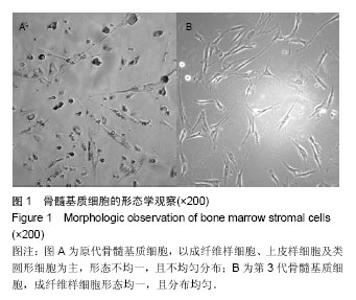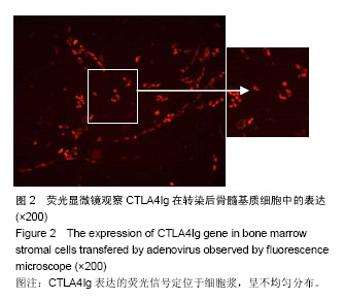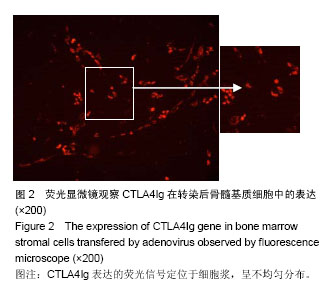| [1] 陈惠仁.单倍型造血干细胞移植的新进展及其临床结果[J].中国组织工程研究与临床康复,2008,12(34):6735-6738.
[2] Lazarus HM.Acute leukemia in adults: novel allogeneic transplant strategies.matology. 2012;17 Suppl 1:S47-51.
[3] Rezvani AR, Storb RF.Prevention of graft-vs.-host disease.Expert Opin Pharmacother. 2012;13(12):1737-1750.
[4] 吴德沛,孙爱宁.临床造血干细胞移植[M].合肥:安徽科学技术出版社,2010.
[5] Iravani-Saadi M, Karimi MH, Yaghobi R,et al.Polymorphism of costimulatory molecules (CTLA4, ICOS, PD.1 and CD28) and allogeneic hematopoietic stem cell transplantation in Iranian patients.Immunol Invest. 2014;43(4):391-404.
[6] Baron F, Humblet-Baron S, Ehx G,et al.Thinking out of the box--new approaches to controlling GVHD.Curr Hematol Malig Rep. 2014;9(1):73-84.
[7] Chen Y, Fukuda T, Thakar MS,et al.Immunomodulatory effects induced by cytotoxic T lymphocyte antigen 4 immunoglobulin with donor peripheral blood mononuclear cell infusion in canine major histocompatibility complex-haplo- identical non-myeloablative hematopoietic cell transplantation. Cytotherapy. 2011;13(10):1269-1280.
[8] Hatano R, Ohnuma K, Yamamoto J,et al.Prevention of acute graft-versus-host disease by humanized anti-CD26 monoclonal antibody.Br J Haematol. 2013;162(2):263-277.
[9] Snanoudj R, de Préneuf H, Créput C,et al.Costimulation blockade and its possible future use in clinical transplantation. Transpl Int. 2006;19(9):693-704.
[10] Durrbach A, Francois H, Jacquet A,et al.Co-signals in organ transplantation.Curr Opin Organ Transplant. 2010;15(4): 474-480.
[11] Masteller EL, Chuang E, Mullen AC,et al.Structural analysis of CTLA-4 function in vivo.J Immunol. 2000;164(10):5319-5327.
[12] Paterson AM, Vanguri VK, Sharpe AH.SnapShot: B7/CD28 costimulation.Cell. 2009;137(5):974-4.e1.
[13] Linsley PS, Wallace PM, Johnson J,et al.Immunosuppression in vivo by a soluble form of the CTLA-4 T cell activation molecule. Science. 1992;257(5071):792-795.
[14] Nakagawa I, Murakami M, Ijima K,et al.Persistent and secondary adenovirus-mediated hepatic gene expression using adenovirus vector containing CTLA4IgG.Hum Gene Ther. 1998;9(12):1739-1745.
[15] Guinan EC, Boussiotis VA, Neuberg D,et al.Transplantation of anergic histoincompatible bone marrow allografts.N Engl J Med. 1999;340(22):1704-1714.
[16] Li J, Semple K, Suh WK,et al.Roles of CD28, CTLA4, and inducible costimulator in acute graft-versus-host disease in mice.Biol Blood Marrow Transplant. 2011;17(7):962-969.
[17] Jitschin R, Mougiakakos D, Von Bahr L,et al.Alterations in the cellular immune compartment of patients treated with third-party mesenchymal stromal cells following allogeneic hematopoietic stem cell transplantation.Stem Cells. 2013; 31(8):1715-1725.
[18] Wu Y, Wang Z, Cao Y,et al.Cotransplantation of haploidentical hematopoietic and umbilical cord mesenchymal stem cells with a myeloablative regimen for refractory/relapsed hematologic malignancy.Ann Hematol. 2013;92(12):1675- 1684.
[19] Wu Y, Cao Y, Li X, et al.Cotransplantation of haploidentical hematopoietic and umbilical cord mesenchymal stem cells for severe aplastic anemia: successful engraftment and mild GVHD.Stem Cell Res. 2014;12(1):132-138.
[20] Chou SH, Lin SZ, Day CH,et al.Mesenchymal stem cell insights: prospects in hematological transplantation.Cell Transplant. 2013;22(4):711-721.
[21] Wu KH, Wu HP, Chan CK,et al.The role of mesenchymal stem cells in hematopoietic stem cell transplantation: from bench to bedsides.Cell Transplant. 2013;22(4):723-729.
[22] 王吉刚,周凡,刘彦琴,等.原代骨髓基质细胞共培养对K562细胞伊马替尼敏感性及细胞周期的影响[J].中国组织工程研究,2014, 18(28):4450-4454.
[23] Nemeth K, Mayer B, Sworder BJ,et al.A practical guide to culturing mouse and human bone marrow stromal cells.Curr Protoc Immunol. 2013;102:Unit 22F.12.
[24] Stagg J, Galipeau J.Mechanisms of immune modulation by mesenchymal stromal cells and clinical translation.Curr Mol Med. 2013;13(5):856-867.
[25] Fan X, Gay FP, Ong SY,et al.Mesenchymal stromal cell supported umbilical cord blood ex vivo expansion enhances regulatory T cells and reduces graft versus host disease. Cytotherapy. 2013;15(5):610-619.
[26] Newell LF, Deans RJ, Maziarz RT.Adult adherent stromal cells in the management of graft-versus-host disease.Expert Opin Biol Ther. 2014;14(2):231-246.
[27] Duan C, Liu J, Yuan Z,et al.Adenovirus-mediated transfer of VEGF into marrow stromal cells combined with PLGA/TCP scaffold increases vascularization and promotes bone repair in vivo.Arch Med Sci. 2014;10(1):174-181.
[28] Padet L, Loubaki L, Bazin R.Induction of PD-L1 on monocytes: a new mechanism by which IVIg inhibits mixed lymphocyte reactions.Immunobiology. 2014;219(9):687-694.
[29] Kanamune J, Iwanaga Y, Kina T,et al.Attenuation of murine graft-versus-host disease by a tea polyphenol.Cell Transplant. 2012;21(5):909-918.
[30] 郑德先,吴克复,楮建新.现代血液学研究方法与技术[M].北京:北京医科大学中国协和医科大学联合出版社,1999:14-22.
[31] de Andrade AV, Riewaldt J, Wehner R,et al. Gamma irradiation preserves immunosuppressive potential and inhibits clonogenic capacity of human bone marrow-derived mesenchymal stromal cells.J Cell Mol Med. 2014;18(6): 1184-1193. |



